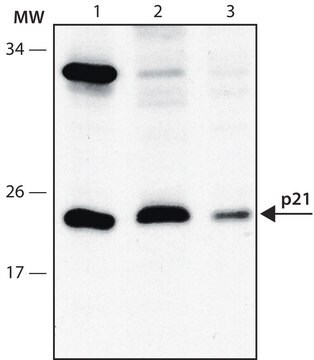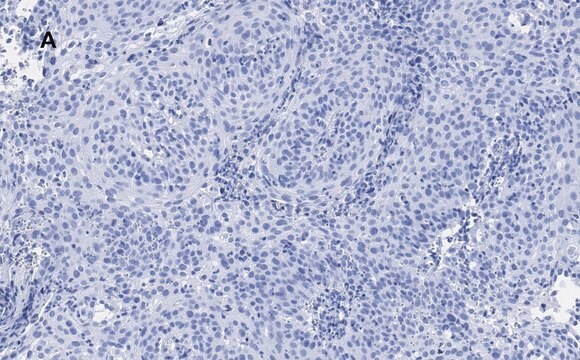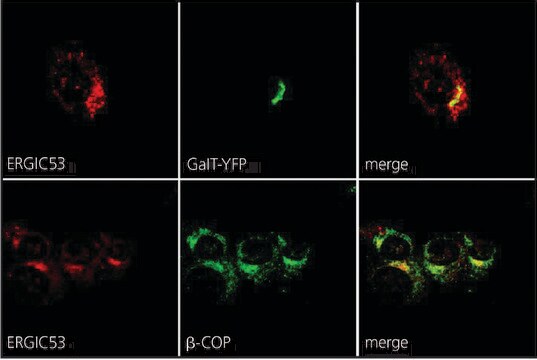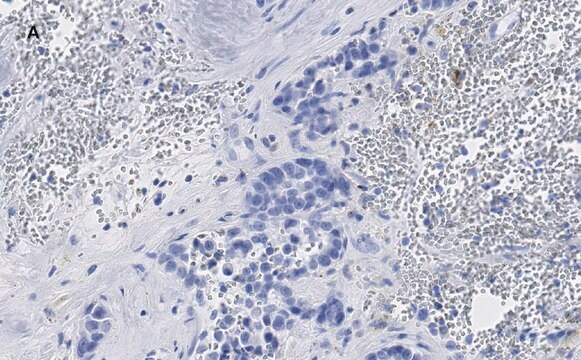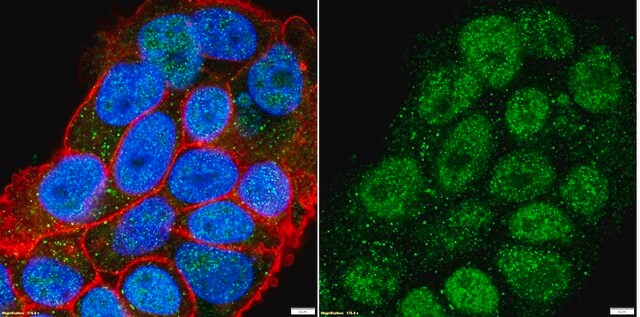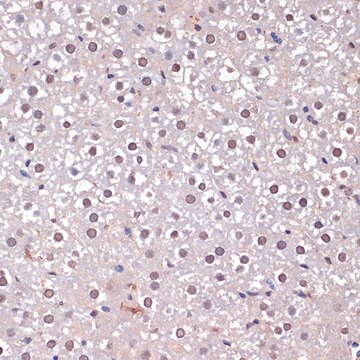G6916
Anti-GADD153 antibody produced in rabbit
affinity isolated antibody, buffered aqueous solution
Sinonimo/i:
Anti-CHOP-10
About This Item
Prodotti consigliati
Origine biologica
rabbit
Coniugato
unconjugated
Forma dell’anticorpo
affinity isolated antibody
Tipo di anticorpo
primary antibodies
Clone
polyclonal
Forma fisica
buffered aqueous solution
PM
antigen 29 kDa
Reattività contro le specie
human
tecniche
immunocytochemistry: 5-10 μg/mL using Hela human cell
microarray: suitable
western blot (chemiluminescent): 1:200-1:400 using whole cell extract of HEK-293 over-expressing GADD 153.
N° accesso UniProt
Condizioni di spedizione
dry ice
Temperatura di conservazione
−20°C
modifica post-traduzionali bersaglio
unmodified
Informazioni sul gene
human ... DDIT3(1649)
rat ... Ddit3(29467)
Descrizione generale
Immunogeno
Applicazioni
- nuclear and cytoplasmic fractions extracted from rat insulinoma (INS) cells to study CHOP Expression in response to ER stress
- whole cell lysates prepared from ER stress induced rat pancreatic tissues
- whole cell lysates prepared from ER stress induced pancreatic insulin-producing cells
It is suitable for immunocytochemistry at a working concentration of 5-10μg/mL using Hela human cell and microarray. It is also suitable for western blotting at a working dilution of 1:200-1:400 using whole cell extract of HEK-293 over-expressing GADD 153.
Azioni biochim/fisiol
Stato fisico
Esclusione di responsabilità
Non trovi il prodotto giusto?
Prova il nostro Motore di ricerca dei prodotti.
Codice della classe di stoccaggio
12 - Non Combustible Liquids
Classe di pericolosità dell'acqua (WGK)
nwg
Punto d’infiammabilità (°F)
Not applicable
Punto d’infiammabilità (°C)
Not applicable
Certificati d'analisi (COA)
Cerca il Certificati d'analisi (COA) digitando il numero di lotto/batch corrispondente. I numeri di lotto o di batch sono stampati sull'etichetta dei prodotti dopo la parola ‘Lotto’ o ‘Batch’.
Possiedi già questo prodotto?
I documenti relativi ai prodotti acquistati recentemente sono disponibili nell’Archivio dei documenti.
Il team dei nostri ricercatori vanta grande esperienza in tutte le aree della ricerca quali Life Science, scienza dei materiali, sintesi chimica, cromatografia, discipline analitiche, ecc..
Contatta l'Assistenza Tecnica.
